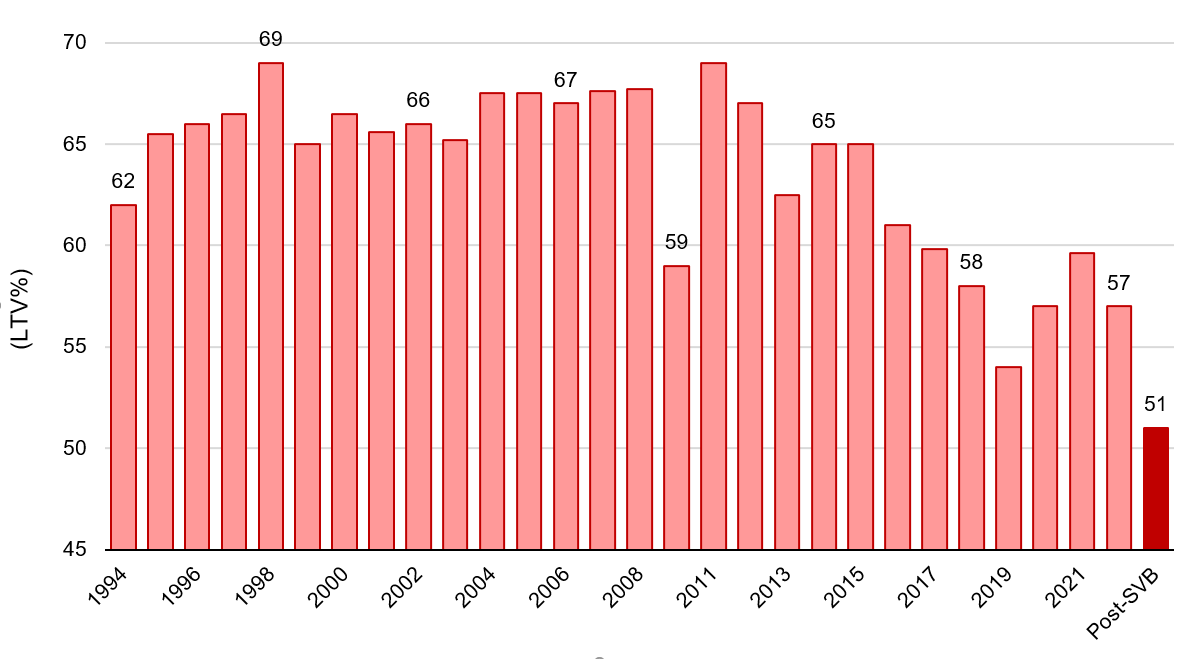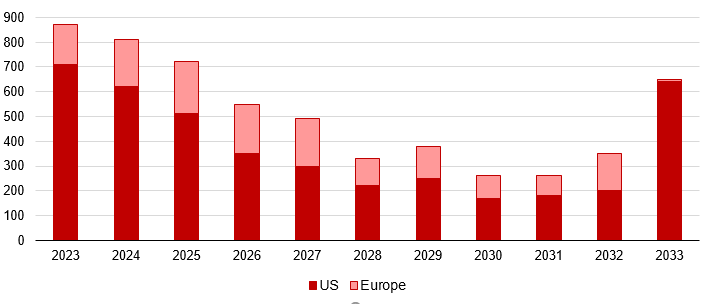Navigating Stressed Real Estate in 2023: Overcoming Challenges and Uncovering Opportunities
In the fast-paced world of real estate investing, 2023 has brought forth a myriad of challenges for investors. From soaring inflation rates to the collapse of prominent banks (such as SVB) and ongoing geopolitical tensions, the real estate market has been significantly impacted. However, amidst these challenges lie hidden opportunities for those willing to navigate the stormy waters of the industry.
Lenders pull back: loan-to-value ratios in decline
One of the key repercussions of recent events is the cautious approach taken by lenders, leading to the lowest Loanloan-to-Valuevalue (LTV) ratios in three decades. This conservative stance aims to mitigate risks and stabilizestabilise the market, but it has left many investors concerned about the overvaluation of real estate assets and the potential for downside risks. As a result, entry valuations have already seen a decline of 5% to -15% across various sectors and locations.

Central banks on aggressive course: interest rate rises and their consequences
Major central banks are embarked on a concentrated and aggressive cycle of interest rate hiking cyclehikes, pushing the Eurozone into a technical recession and potentially placing the United States on a similar path. While inflation is expected to cool downease, there are concerns that it may plateau at around 3-4%, which could prompt central banks to maintain peak interest rates well into 2024. AmidstAgainst this backdrop, real estate has emerged as one of the first asset classes to face the repercussionseffects of uncertaintiesuncertainty across the economicaleconomic spectrum. The asset class isIt has come under pressure, facing headwinds across several dimensions.
The pressure is mounting: Financing costs, commodity prices and labour shortages
Furthermore, the transition to a higher interest rate environment has caused borrowing costs for real estate loans to skyrocketshoot up. This increase in debt returns has caught many developers off guard, as they werehad been accustomed to a decade of record- low interest rates over the previous decade. As a result, developers find themselves in dire need of freeing up capital to improve their financials and avoid breaching covenants. This urgency has been exacerbated by rising commodity prices and a scarcity of labour, addingputting additional pressure toon the industry.
Traditional lenders: on guard and more cautious than ever
Lastly, dwindling property values and economic uncertaintiesuncertainty have made traditional lenders, – such as banks, – more cautious. Tighter underwriting standards and selective lending practices have become the norm. Additionally, a significant volume of debt needswill need to be refinanced in the coming years, creating further challenges for borrowers.

Silver lining: Opportunities for resourceful investors
Recent months have seen multiple cases of balance sheet healthy real estate developers with healthy balance sheets failing to raise enough capital to take advantage of heavily discounted, but well-located, projects in starkey cities across Europe. Credit financing has beenbecome increasingly difficult. The increased costs of borrowing and scarcity of financing, coupled with declining asset values and over-leveredleveraged balance sheets, have placed certainsome borrowers in a predicament. There arehave been numerous cases of real estate funds, developers, family offices, and private owners, burdened by heavy exposure, resorting to selling their assets at an increasingly discounted rate.
However, amidst the challenges, there is a silver lining for investors with availablesufficient funds. The increase in distressed sellers presents strong investment opportunities. Asset managers have recognizedrecognised this trend and have introduced new investment vehicles specifically tailored to capture these opportunities. These vehicles have a maturity period of 4 to -6 years and aim to purchase discounted real estate units. The properties are then refurbished and sold at a higher market value or undergo value-added transformations, such as adding floors or converting commercial spaces to residential use. These projects typically have a lifespan of 12 to -30 months and offer relatively certain exits, especially in prime cities orand highly sought-after tourist regions.
Looking ahead: Real estate market dynamics for 2023 and beyond
As we enter the second half of 2023, it is crucial for real estate market participants to closely monitor emerging trends closely and adapt their strategies accordingly. The shift towards disinflation signals a change in market dynamics, creating opportunities for buyers and prompting sellers to reassess pricing strategies. Investors need to re-evaluate their investment approaches in light of these evolving dynamics. By staying well-informed and responsive, industry participants can navigate the changing landscape and make informed decisions in the months to come.
Conclusion: Grasping challenges as opportunities
In conclusion, while the real estate market faces challenges in 2023, it also presents opportunities for savvy investors. By being adaptable and informed, investors can uncover hidden gems in distressed assets and capitalizecapitalise on the changing market dynamics. It'sIt is time to embrace the challenges and uncover the opportunities that lie ahead.



